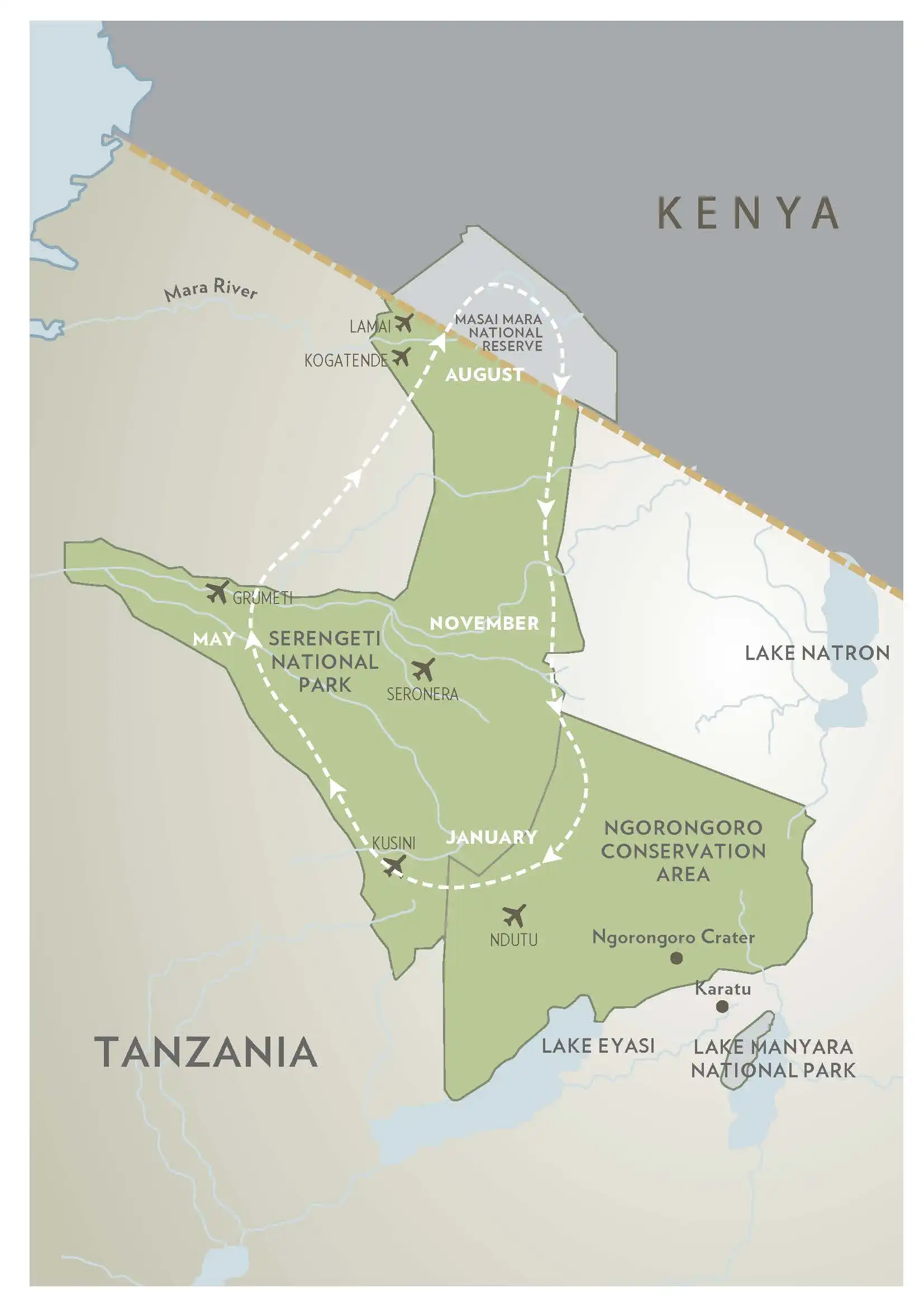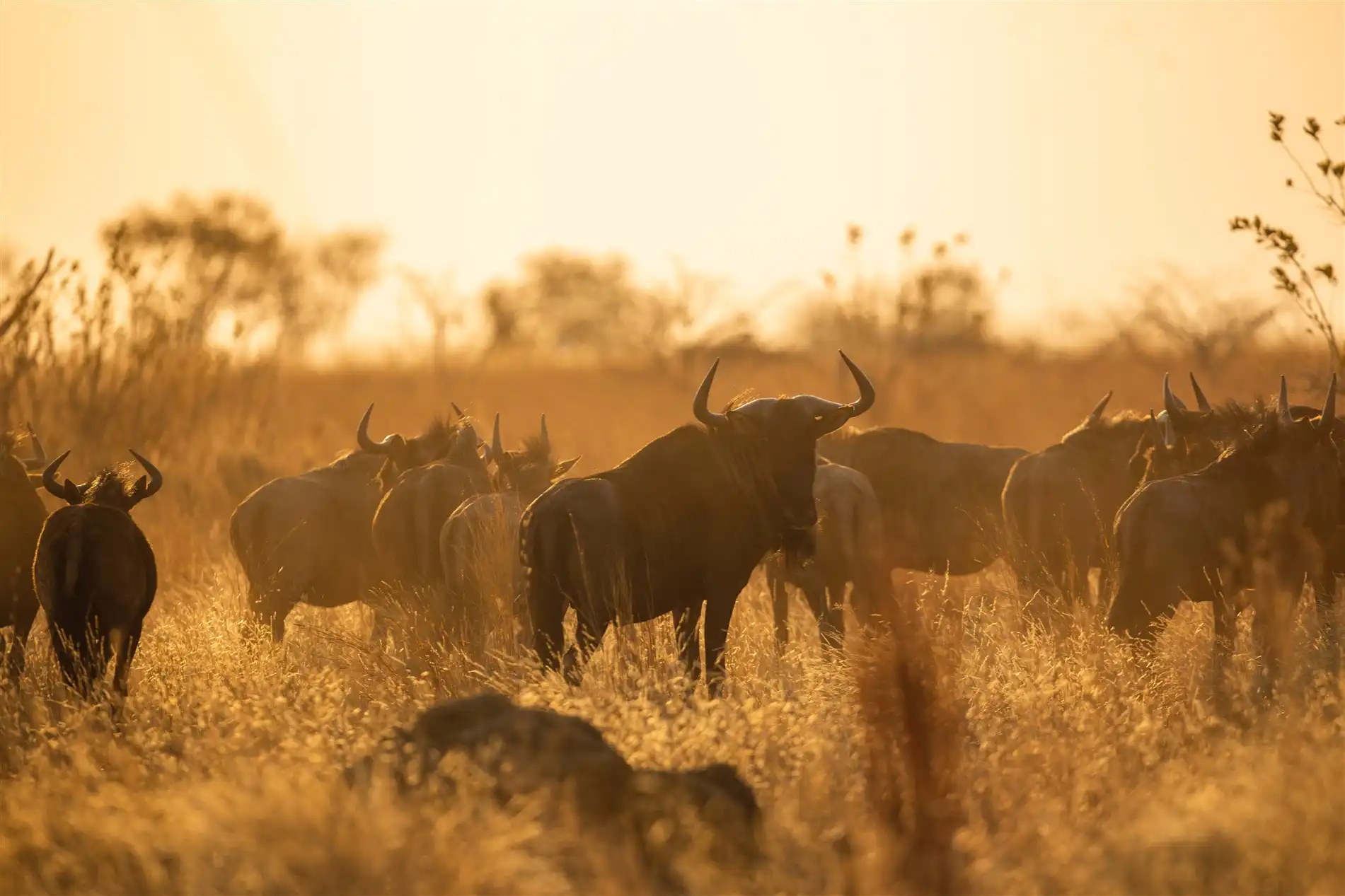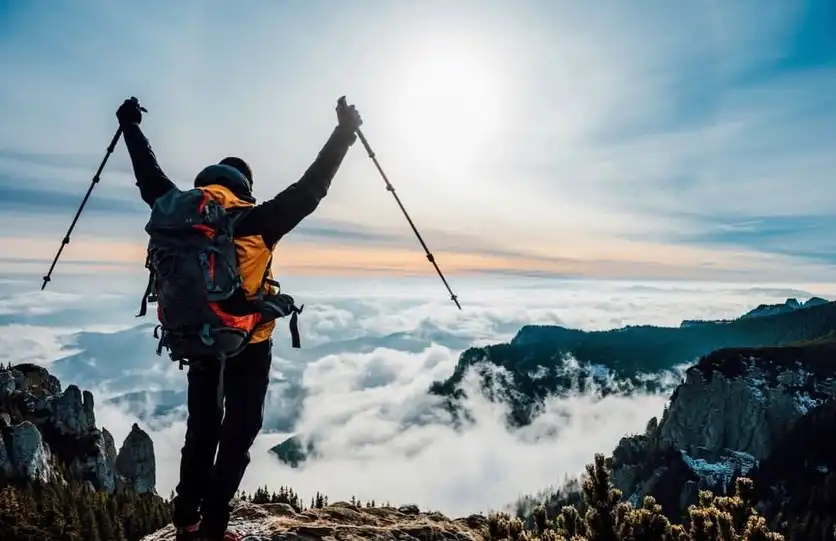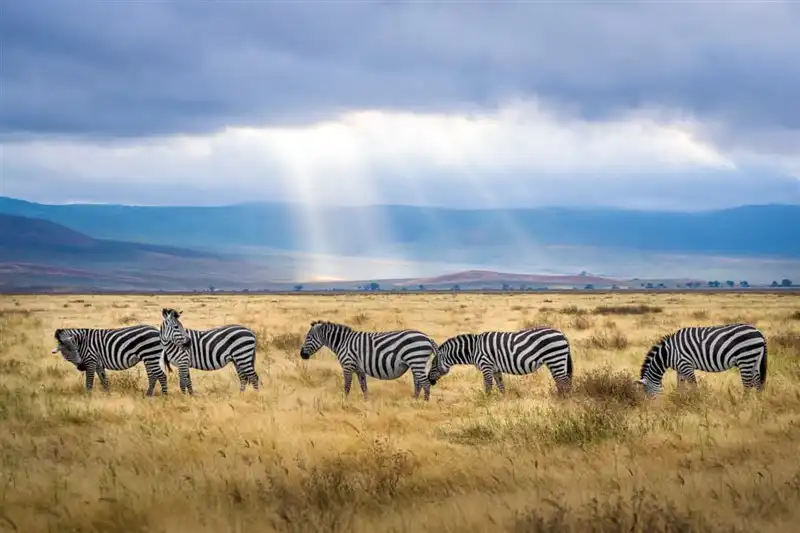The Wildebeest Migration at Serengeti National Park
The Wildebeest Migration at Serengeti National Park, Tanzania - Natural Wonder in Africa
The Great Wildebeest Migration is one of the most remarkable natural events in the world, attracting tourists and wildlife enthusiasts from all over the globe. As one of the most iconic wildlife experiences in Africa, the migration is a must-see for those who are passionate about nature and wildlife.
At its core, the Great Wildebeest Migration is a circular journey that takes place in the Maasai Mara in Kenya and the Serengeti in Tanzania, with over two million wildebeest, zebra, and gazelle moving in a clockwise direction in search of better grazing and water. The migration is a continuous cycle that occurs year-round, with different phases happening at different times of the year.
The Wildebeest Migration - A year Phonemenon
The Great Wildebeest Migration is a year-round phenomenon that comprises four distinct phases - calving, rut, migration, and dispersal. Each of these phases is crucial to the survival of the wildebeest and other animals that take part in the journey.

Calving Phase
The calving phase of the migration takes place between January and March. During this time, the wildebeest give birth to their calves in the Serengeti, which provides plenty of food and water. This phase is marked by the sight of thousands of wildebeest calves running and playing together, creating a magical and unforgettable experience for those who witness it.
Rut Phase
The rut phase of the migration takes place between May and June, during which time the wildebeest and other animals mate. The males compete with one another for the females' attention, resulting in spectacular displays of power and agility.
Migration Phase
The migration phase of the journey is the most famous and exciting phase of the Great Wildebeest Migration. This phase begins in July and continues through October, with the wildebeest moving from the Serengeti to the Maasai Mara in search of fresh grazing and water. This is the time when visitors from all over the world flock to East Africa to witness this spectacle of nature.
Disperal Phase
The dispersal phase of the migration takes place between November and December, as the wildebeest and other animals move back to the Serengeti in preparation for the next calving season. During this phase, visitors can still see the migration in action, albeit on a smaller scale.
The Impact of the Great Migration on the Ecosystem
The Great Wildebeest Migration is not only a natural wonder but also has a significant impact on the ecosystem of the Maasai Mara and the Serengeti. The migration helps to maintain a healthy balance between predators and prey, and the wildebeest play a crucial role in the food chain of the savannah.
Moreover, the migration supports the local economy by attracting tourists from all over the world, providing employment opportunities, and supporting conservation efforts. The Maasai Mara and Serengeti are home to many indigenous tribes, and the migration is an essential part of their culture and heritage.
The Best Places to witness The Great Migration in Serengeti
If you want to witness the Great Wildebeest Migration up close, there are several key locations to consider. Here are some of the best places to see the migration in action:
- Serengeti National Park: This is the heart of the migration, where the herds spend most of their time. The park is home to a diverse range of wildlife, including lions, cheetahs, and elephants, and offers some of the best opportunities to witness the river crossings.
- Maasai Mara Reserve: Located in neighboring Kenya, the Masai Mara Reserve is a popular destination for witnessing the migration. The reserve offers stunning landscapes and wildlife, and is home to some of the most breathtaking river crossings.
- Grumeti Game Reserve: This private reserve offers a more exclusive and intimate safari experience, with luxury accommodations and the chance to witness the migration up close.
- Ngorongoro Conservation Area: This area offers a unique opportunity to witness the migration from above, with hot air balloon rides providing a bird's eye view of the herds.
How to Plan Your Great Wildebbest Migration Safari
If you're planning a trip to witness the Great Wildebeest Migration, there are a few key things to keep in mind. Here are some tips to help you plan your safari adventure:
- Choose the Right Time: The timing of your trip is crucial to experiencing the migration in all its glory. The herds move through the Serengeti and Masai Mara in a circular pattern, so it's important to plan your trip based on their movements. Generally, the best time to visit is from December to July, with the peak of the river crossings happening in June and July.
- Choose the Right Accommodations: There are many different options for accommodations during your safari, from luxurious lodges to more basic tented camps. It's important to choose a location that's close to the action and offers the amenities you need to have a comfortable stay.
- Plan Your Itinerary: There's so much to see and do in the Serengeti and Masai Mara, so it's important to plan your itinerary in advance to make the most of your time. Whether you want to witness the river crossings, go on a hot air balloon ride, or simply take in the stunning landscapes and wildlife, there are plenty of options to suit every traveler.
- Choose a Knowledgeable Guide: Having a knowledgeable guide is essential to making the most of your safari experience. A good guide will have a deep understanding of the local ecosystems and wildlife, and can help you spot animals and navigate the terrain safely.
The Great Wildebeest Migration is a natural wonder that draws thousands of tourists to East Africa every year. With its stunning landscapes, diverse wildlife, and breathtaking river crossings, it's easy to see why it's considered one of the greatest wildlife spectacles on earth.
If you're planning a safari adventure to witness the migration, be sure to consider the best locations to see it up close, choose a reputable tour operator, pack appropriate gear, and respect the wildlife. By following these tips and being flexible with your itinerary, you can have a successful and unforgettable experience while also contributing to the conservation and protection of the natural environment.
So what are you waiting for? Start planning your Great Wildebeest Migration safari adventure today and get ready for an experience of a lifetime.

 11 Dec
11 Dec 21 May
21 May 24 Feb
24 Feb